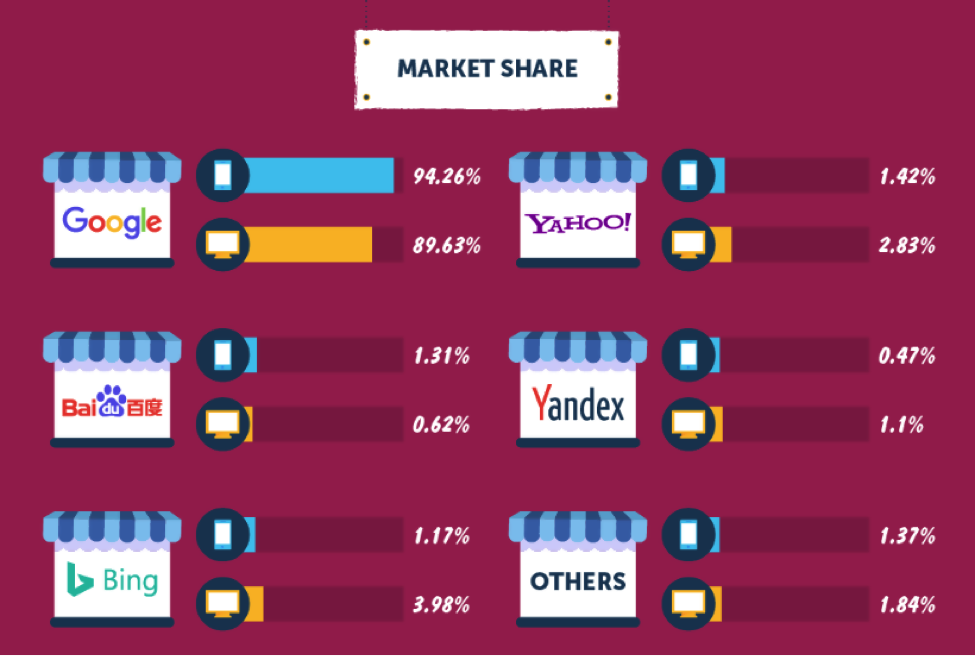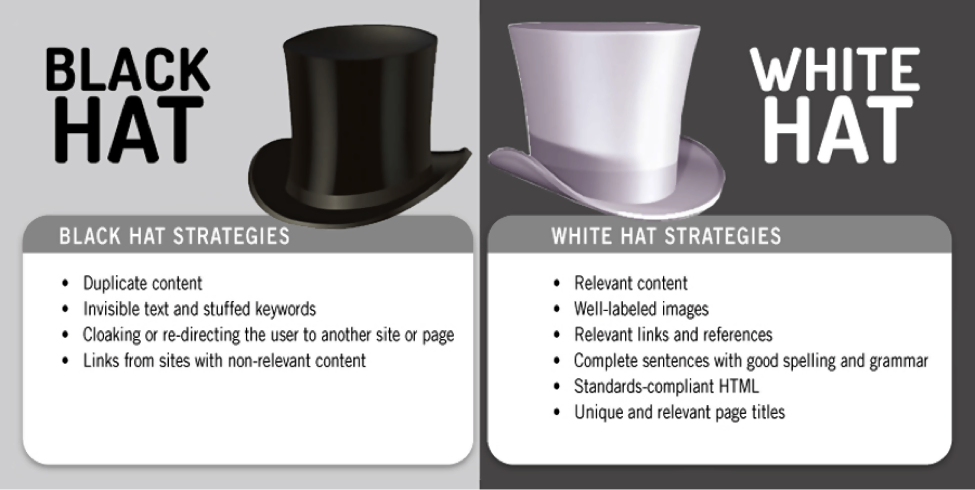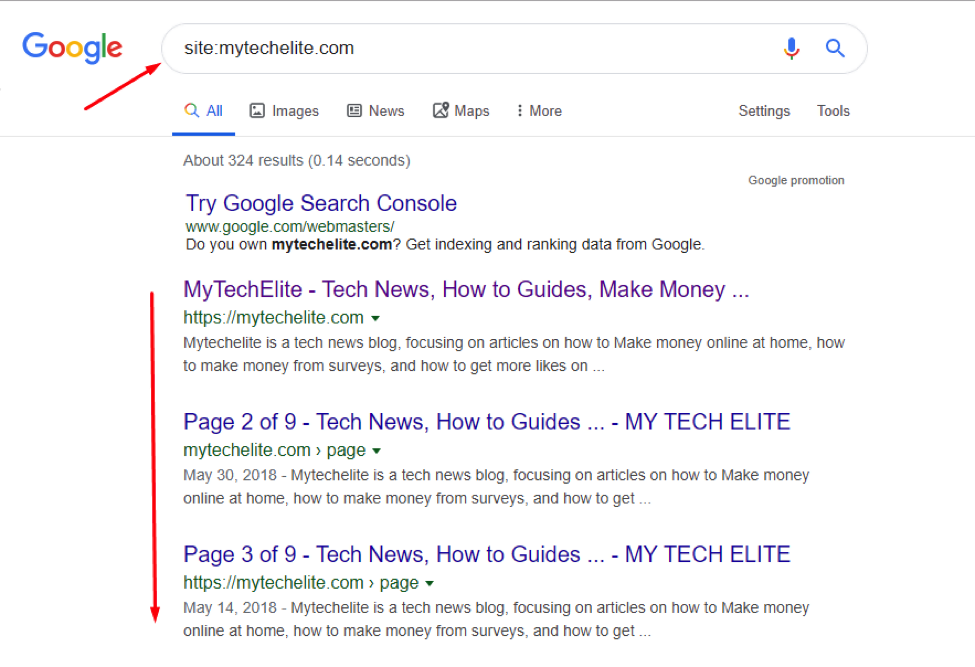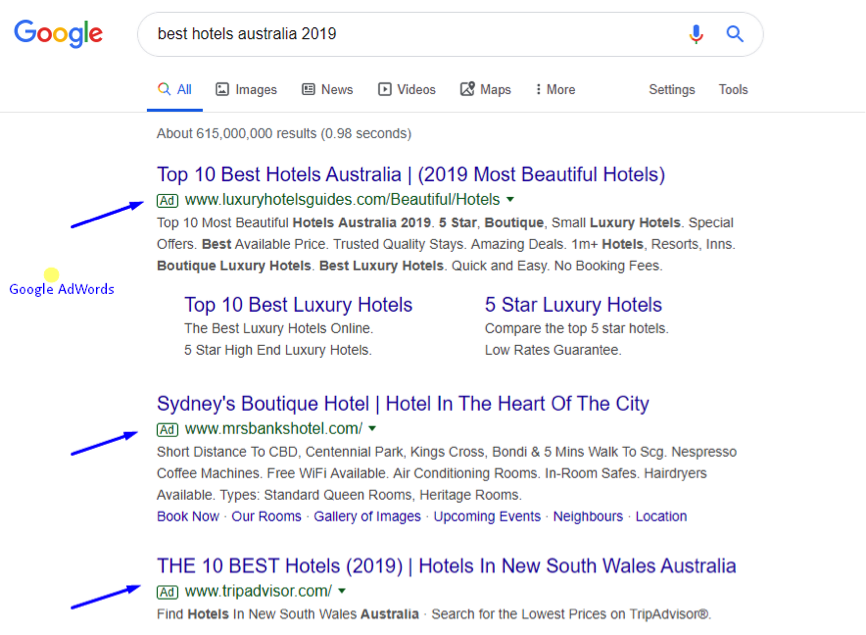
Why a CMS is Important to Your Business?
May 3, 2018
Digital Marketing Strategies 2021 – Online Marketing Ideas for Businesses
January 31, 2020If you are running a blog for your brand or a B2B site, you must probably have heard of SEO. SEO is an important digital marketing tool used by many online entrepreneurs to drive traffic to their blogs and funnels in order to generate leads and achieve the ultimate goal of making a sale.
While SEO is undeniably a crucial element to your digital marketing campaigns, new beginners are often left wondering: What exactly is SEO? And how does it work?
SEO stands for Search Engine Optimization, which means optimizing your website so that it ranks higher in search engines’ results within the unpaid section, also known as organic listing.
In simple terms, SEO is the art of making your site discoverable on the search results when people search for keywords related to your business. The goal of SEO is to make your website top the search results in the search engine. With this, the visitors will most likely visit your website.
Why It Matters
Are you wondering why SEO even matters to your business? Here are some facts to help you make informed decisions regarding search engine optimization.
Most of the online experiences start when you hit the search button from your favorite search engine. In fact, about 75 percent of online users start their searches on Google.
Besides, the top five results on Google get 67 percent of all the clicks. Now you have the picture of why SEO is important to your business.
Please notethat Google was used as a reference point because almost 91 percent of all the searches are being made through the Google search engine.

The statistics show that when you rank higher on Google search results, your site will be easily discovered by visitors and, thus, experience higher CTRs and traffic. Before getting to how SEO works, let me take you through two important approaches to inform your SEO strategy.
Black Hat vs. White Hat SEO
Are you playing the long entrepreneurial game or just want to rank higher on search engine and make some quick cash?
Some online marketers and organizations leverage SEO to rank their content quickly and make money in the short term. Black hat SEO can be termed as the “get-rich-quick” scheme. Black hat approach tends to focus on optimizing the content for the search engine only, but not for humans.
Eventually, black hat SEO results in spammy pages that are often difficult for people to read. While these sites might rank higher quickly, these sites are most of the times banned by the search engines and affect the sustainability of the business negatively.
White hat SEO, on the other hand, focusses on building a sustainable online business by following the SEO best practices and focusing on the human audience. With this, you produce the best content to your visitors that is easy to read and navigate while being relevant to your niche.

While the black hat approach might be the best in short term scheme, in my opinion, if you want to establish a trustworthy brand online, you must follow the white hat approach to enjoy SEO benefits in the long term.
How Does SEO Work?
When a user clicks the search button, the search engines go through millions of webpages in its database and displays the most relevant webpages in the Search Engine Results Page (SERP).
Please note that your page needs to be visible to search engines for it to appear in the SERP. Search engines have three primary functions that contribute to the overall search engine optimization.
Crawling
Search engine crawling refers to scouring the internet for content by sending special robots known as “spiders” to look for new and updated content. The spiders use links to discover content such as images, webpages, and videos.
The special robots start from a webpage and use links to hop to another webpage to find new content. The process is repeated and the discovered URLs are added to an index. Google has an index of discovered URLs known as Caffeine.
Indexing
The index is a large database of discovered URLs which are retrieved when a user searches for relevant content. When a page is in the index, it’s the running to be displayed in the SERP.
Ranking
When a user searches for information, the search engine queries its index for the highly relevant content and serves it to the searcher in order of relevance. The order of the search results by relevance is referred to as ranking.
Pro Tip:If you want to know whether your pages are indexed, head to Google search bar and type “site.yourdomain.com”. Google will show the results that are in its index for the specified site.

When developing your SEO strategy, your goal will be making your website appear at the top of the rankings.
Factors That Affect SEO
Now that you have learned what SEO is and how it works, its time to look at the factors that affect your SEO rankings. While there are more than 200 ranking factors used by Google in their algorithms to rank search results, you can optimize your website using these selected factors and achieve high SEO rankings.
On-Page SEO
On-Page SEO refers to all the factors that Google uses to rank your site by analyzing the specific page you are trying to enhance, such as the content and page architecture. In simple terms, on-page SEO are the elements within your website that you have total control over, and you can enhance them by following the SEO best practices. Here are the selected on-page SEO elements that you can improve to optimize your page.
- Content
Great and quality content is important to your SEO rankings. When a searcher clicks the search button, Google tries to find the best relevant content that will meet the searcher’s needs. As an online marketer, your primary job is to create and serve great content.
Are you wondering how you can create great content for your blog? Well, stay tuned.
- The first step to creating top-ranking content is quality. Always publish useful and helpful content that will deliver value to your users
- Incorporate keywords in your content to make it easily visible. Careful on how you use keywords, flooding keywords to the content will hurt your SEO rankings.
- Always post fresh content regularly or update the existing content to add new information.
- HTML
After creating rich and engaging content, the next step is to optimize your HTML. You do not vast programming knowledge to optimize your HTML, here are the only parts that you must optimize for better SEO ranking.
- Title Tag– The title tag provides an overview of what your page is all about. With blogs, the title tag is treated as the h1-tag on your blog; therefore, you should have only one h1-tag in your blog to pass the title to Google.
- Meta description– Meta description provides more details about the content on your page. The meta description is visible during the search results listing. Visitors can read this excerpt ad decide whether to click to your page or not.
- Sub-headings– Subheadings provides a formatted content structure that is easy to read for your visitors and good for your SEO rankings. Use H1, H2, and further subheads to format your content.
- Architecture
The site architecture of your blog can make or break your SEO rankings. With architecture, your main role should be to provide a great experience to your visitors as they traverse through your page. For instance, when a user clicks through to your site and it takes too long to load, he or she will likely exit the page.
The following are the options you can optimize to create a good ranking architecture:
- Duplicate content– Duplicate content doesn’t hurt your SEO rankings and search engines won’t penalize you for this. However, you must be careful not to fall in the trap of canonicalization. Canonicalization happens when you repost one of your posts to a more authoritative domain than yours. Google will index the other article first and most likely serve it to visitors, hurting your SEO rankings badly.
- Mobile-friendliness– Majority of the searches on the internet are done from mobile devices. Design your website with mobile users in mind. You must ascertain that mobile users can view, read, and navigate your blog from a mobile device. There are several solutions to achieve this including the AMP WordPress pluginor using accelerated mobile pages by Google.
- Page speed– The average bounce rates for pages with a load time of up to 10s is 123%. This means when your page takes too long to load you will likely get many bounce rates which can hurt your SEO rankings.
Off-Page SEO
Off-page SEO elements refer to eternal factors that can impact your SEO performance. Neither you nor your organization has control over these factors. Regardless of the nature of these factors, there are some workarounds you can use leverage them and improve your SEO rankings.
Here’s the breakdown of the off-page rankings and how to make them work on your favor:
- Domain authority
How trustworthy is your domain name?
Google uses backlinks and your domain age to determine the level of authority your domain has. If your domain is widespread and has enough backlinks, it will definitely have more authority over other sites. The level of domain authority impacts your SEO rankings.
- Links
A backlink is a common way to improve your off-page SEO. Please remember that search engines ban websites with spammy links. Remember the white hat SEO? Use white hat SEO skills to build a reputable online reputation to enable influencers and other established digital marketers link back to your blog in their content.
- Social
Social likes and shares form another important off-page SEO factor that can impact your blog. The rule of thumb is that the high number of shares the more productive your SEO strategy will be. Get influencers and established people to share your blog content to benefit from even more high SEO rankings.
You May Also Like: Best Digital Marketing Training Courses Online
What is SEO Marketing?
While all the SEO best practices listed here relate to organic traffic, you can leverage SEO marketing to use paid alternatives to rank higher in the SERP. SEO marketing refers to paid search advertising to help your site rank on top in the SERP. You can use targeted ad campaigns such as Google AdWords, pay-per-click, and display ads to achieve SEO marketing.

Conclusion
SEO is definitely one of the best tools you can use as a digital marketer. This guide has taken you through the basics of SEO and how you can optimize your website for higher SEO rankings. While there are a lot of factors that affect your rankings, it all comes down to the content you are serving to your visitors. When you have excellent off-page SEO but provide crappy and irrelevant content, you will experience higher bounce rates which will hurt your rankings.
When designing the best SEO strategy, keep in mind that your visitors play a significant part. Optimize your page to offer great user experience to both desktop and mobile users. Keep in mind that, the benefits of SEO won’t come overnight, take your time to optimize your site and wait to see the magic.




